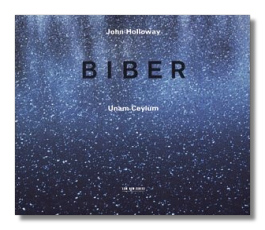
The Internet's Premier Classical Music Source
Related Links
- Biber Reviews
- Latest Reviews
- More Reviews
-
By Composer
-
Collections
DVD & Blu-ray
Books
Concert Reviews
Articles/Interviews
Software
Audio
Search Amazon
Recommended Links
Site News
 CD Review
CD Review
Heinrich Ignaz Franz von Biber

Unam Ceylum
- Violin Sonata #III in F Major
- Violin Sonata #IV in D Major
- Violin Sonata #VI in C minor
- Violin Sonata #VII in G Major
- Violin Sonata #81 in A Major
- Violin Sonata #84 in E Major
John Holloway, violin
Aloysia Assenbaum, organ
Lars Ulrik Mortensen, harpsichord
ECM New Series 1791 (472084-2) DDD 77:19
There were violin virtuosos long before Fritz Kreisler and even before Joseph Joachim and Nicolò Paganini. In Italy, there was Pietro Locatelli (1695-1764), but even he was a young whippersnapper compared to the Bohemian violinist and composer Heinrich Ignaz Franz Biber (1644-1704). (After a little bit of well-placed self-promotion, he became Heinrich "von" Biber in 1677.) English writer Charles Burney lavishly praised both his playing and his compositions, including – so it seems – several of the sonatas on this very CD.
In recent years, there's been new interest in Biber's music, and there have been several new CDs. One of the most important is Andrew Manze's lively set of Biber violin sonatas from 1681 (Harmonia Mundi HMU907134.35), which won a Gramophone Award in 1995. Four of those same sonatas appear on this new ECM New Series CD, and they are joined by two more sonatas. Two of the 1681 sonatas, #IV and #VI, employ scordatura effects in which individual strings (one or more) are tuned away from their neighbors by other than the usual interval of a fifth. This changes both the timbres and the chords that are available to the violinist.
Holloway is not a newcomer to Biber. For Virgin, he has recorded the so-called Rosary Sonatas and the Passacaglia for solo violin. Compared to Manze, Holloway and his basso continuo players are more mellow and sober. Manze favors lively tempos and a greater range of expression, and seems intent on presenting Biber as an innovator, perhaps even as a bit of an outsider. Holloway takes a more cerebral tone, as if he wants to draw a parallel between these works and the solo violin sonatas of Johann Sebastian Bach. He has less interest in Biber's "effects" and more interest in the music's spiritual core. There's definitely room for both interpretations: Manze in the morning and Holloway in the evening, perhaps. Curiously, Holloway uses both harpsichord and organ as basso continuo instruments. (Manze uses both too, but Holloway frequently uses them simultaneously.) There is evidence to suggest that Biber might not have thought this as odd as some modern commentators find it. However, in the long run, this is a matter of taste, and Holloway's partners are self-justifying.
There are excellent, non-obscurantist booklet notes by Holloway and by Peter Wollny. The Latin title to this CD – roughly, "One Heaven," I believe – is not explained, however. The engineering is beautifully warm, scoring points over the brighter Harmonia Mundi discs. ECM New Series will release Holloway's recordings of the remaining 1681 sonatas in the future.
Copyright © 2002, Raymond Tuttle


















